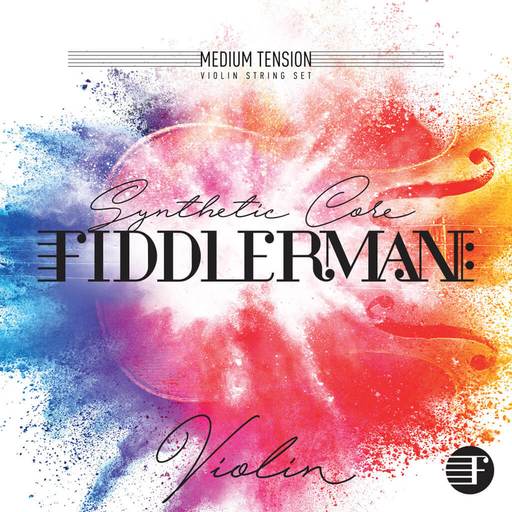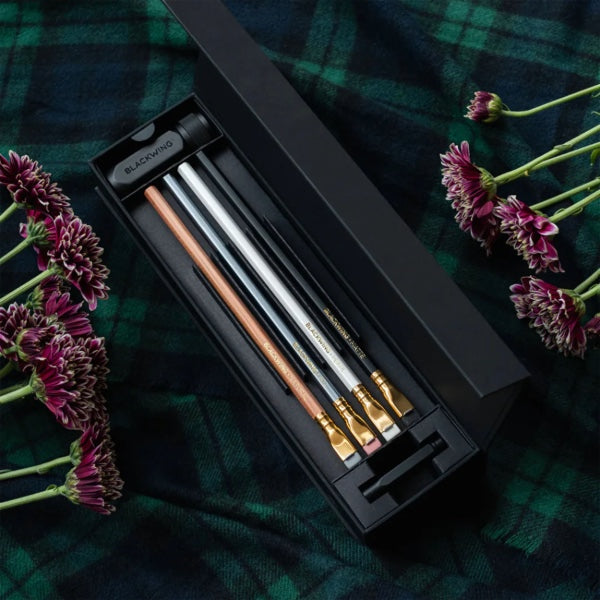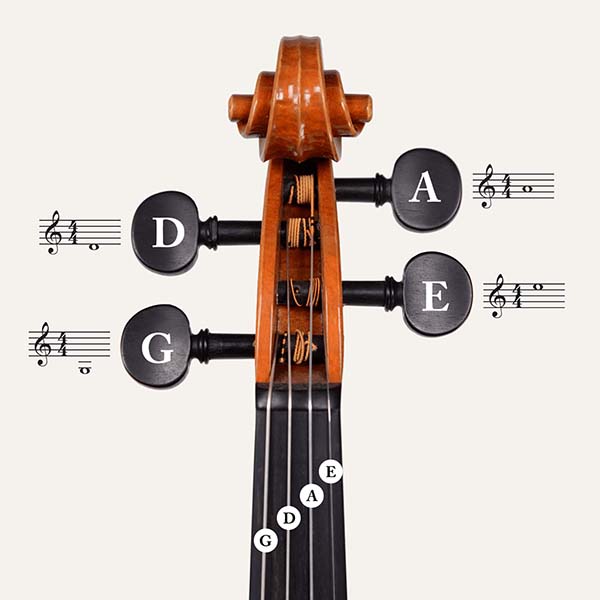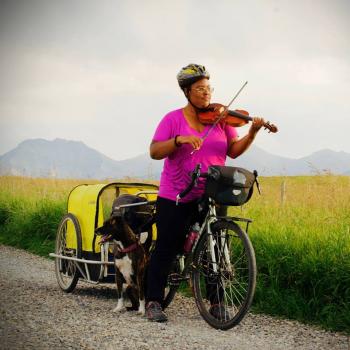Fiddlershop’s diverse following has led to wonderful stories and friendships with our customers. We watched Jon's first journey to build his own violin.
A cedar wood log in a pile destined for a fire isn't the first place one would look to build a violin, but John had an experiment. What happens when you use reclaimed wood for building a violin, and then add some magic, using the process known as plate tuning
 This is Jon's story in his own words.
This is Jon's story in his own words.
Just over a year ago, during a particularly long, snowy, relatively boring winter in Northern New Hampshire, I stumbled across an old violin that one of my boys had owned, but never played. One thing led to another, and I decided I would try and play the violin. "How hard could it be?", I thought. "You only have to play one note at a time!"
Having played the piano for a number of years, as well as guitar, I foolishly and ignorantly overestimated my musical prowess, and underestimated the depth and complexity of this simple instrument. Little did I know, the violin would effect me more than I could have guessed.
I bought my first fiddle on Amazon with a coupon and invested $23.71 in it, so I splurged and purchased a shoulder rest and instruction book soon after. My wife joined the excitement and told me she had an old fiddle of her grandpa's, and it was in need of repair. As I Googled answers, I stumbled upon the second biggest influence in my new found interest - Fiddlerman.com.
After listening to stuffy violin experts who had a rule and a method for everything, and told me I was not qualified to mess with my own violin, and I needed to find something called a "Luthier", I found this guy about my age, wearing a ball cap, telling me I could do it!
Pierre's videos on technique, vibrato, bowing, shoulder pain, etc...encouraged me so much. I watched them all. I watched him show me how to cut and fit a sound post in a violin. I got my wife's old fiddle and went to work. I bought some tools and replaced the fingerboard and added the missing sound post and installed a new bridge -- and it actually played! I bought several other old fiddles in need of repair and repaired and sold them on Ebay with one goal. I wanted a FIDDLERMAN FIDDLE!
I received my Fiddlerman Master violin last April -- 11 months ago. I was hooked. I read everything and listened to everything I could on every topic from the old masters to how a violin was made.
That brings us to February 6th 2016.
I got it in my head that maybe I would like to build a violin. One fellow told me it was too hard and showed me the purfling around the edge of the violin as an example of why it just couldn't be done by regular folk. That did it. I am building a fiddle, darn it. I took my $23.71 investment out to the shop and traced it, and made a plywood template, and a form for a violin.

I got a piece of red cedar flooring to use as a top (belly plate) and found a block of maple at a store for the neck and sides. A note of caution -- you can get hurt trying to cut 1.2mm thick pieces on your table saw (don't ask me how I know...).
It was cold outside, and even colder in my shop somehow, so I took over one end of the kitchen table and boy, did I make a mess, but I have a most wonderful wife!
I built a wood bending iron out of some iron pipe and my old heat gun. It worked great. I clamped my contraption to the end of the table and away I went.




Boy, this is fun! I would note, that I didn't use the hide glue real luthiers use. I used Titebond wood glue and System Three epoxy because that is what I had and what I was familiar with. The corner blocks and end blocks are pieces of a scrap 2x4. After recovering from a near heart attack at the price of gouges at the woodworking store, I bought some old used ones for $20 and a small plane at a second hand shop. I did order 2 thumb planes from China on Ebay.


I just kept copying my black violin as I went along. I used a contour gauge from the hardware store to help with the arching of the plates. What I didn't have, I made or scrounged up.
I made up a jig to cut most of the groove for the purfling with my trusty Dremel tool. It cost me $0 and worked great. What the Dremel didn't reach, I cut with an Exacto knife from 1984 we found.




I rubbed the side of a pencil over the ff holes to get a pattern, and used carbon paper to transfer them. They came out a little larger than they were supposed to....but this is a learning experience, so it is O.K.
I had enough time invested at this point, that I truly wanted this "Firewood Fiddle" to be playable -- and this led me into the world of plate-tuning. You will learn fairly early that there are many opinions in violin-world. The "right" varnish, the "right" order or method of construction, the "right" woods and tools. This applies to plate tuning. Find a direction that appeals to you and stick to it and don't get worried about all the other avenues to "success".
I built a test stand with an old speaker and some padding stolen from my wife's sewing room and used tea leaves vibrating on the violin plates to find the key resonances. Really cool stuff!!


There is no way I was spending the kind of cash they were asking for official violin clamps! I made a trip to the hardware store and bought a 1 1/4" dowel rod, 24 wall anchors and some chair leg cushions for under $20.



It's time to make a label, mix up some epoxy and put this bad boy together. It really starts to get exciting at this point, and my wife will tell you how much of my focus was diverted to this project!


At this point, my attention turned to the neck and scroll. I bought a cheapie from Ebay for $10 to use as a guide...and a fail safe if I found the carving too difficult. I have to tell you, through the whole project, my favorite parts have been the carving. Whether it was the plates or the neck and scroll, it is a very satisfying experience. Yes, I cut myself more than once. Maybe should have gotten stitches, haha.
This was not as hard as it looked. Carefully, mark out the block of maple and cut away whatever is not supposed to be there.




Now with the scroll done and most of the neck, we make the dovetail joint to attach the neck — very carefully (sweating bullets here).
I broke down and ordered a $10 violin neck angle gadget when I ordered a couple things to finish my project. It could have easily been made from scraps in the shop, but I felt it was worth it.




Oh boy! It looks like a fiddle! I just couldn't stand it, and decided to use a tiny drop of 5-minute epoxy and attach the fingerboard. I waited — about 20 minutes. (I am a patient man.)
GAME ON!!

OH, YEAH! SHE PLAYS! And she sounds good. Still have to finish the neck by the button, and put the finish on.
Here's the Firewood Fiddle next to my awesome Holstein Il Cannone.

I decided since I had a rustic fiddle made from a piece of sugar maple and cedar, I would continue the thought, and used Tried and True Original finish on the violin. It is made from linseed oil and beeswax and it totally non-toxic and environmentally friendly. I love the smell! The creator of Tried and True is a violinist and also has a line of vintage violin finishes. You get a nice satin sheen.

Now, we re-assemble the violin, and make final adjustments.


In the pictures above, you can see where I accidentally cut the button off when I was cutting the back out. I had to make a little piece to repair it.
I began my violin building experience on February 6th, and completed it on March 6th, exactly 4 weeks to the day. Yes, I had to make about 4 or 5 sound posts and adjust the bridge and nut and fingerboard...but, yes! it plays nice and sounds nice enough that I have quite a few hours on it, even though I have that awesome Holstein violin hanging in the living room.
Yes, you CAN build a violin, adjust your own sound post and learn to play.
Thanks Fiddlerman for getting me started and teaching me so much.
Will I build another violin? I think so!











2 comments
Asa Holstein
Hi Gerard! Thank you!! Good luck on your new journey with violin making :)
Hi Gerard! Thank you!! Good luck on your new journey with violin making :)
Gerard Mcdonnell
Amazing, have been following Jon on YouTube and am about to embark on my fiddle making journey.
Amazing, have been following Jon on YouTube and am about to embark on my fiddle making journey.